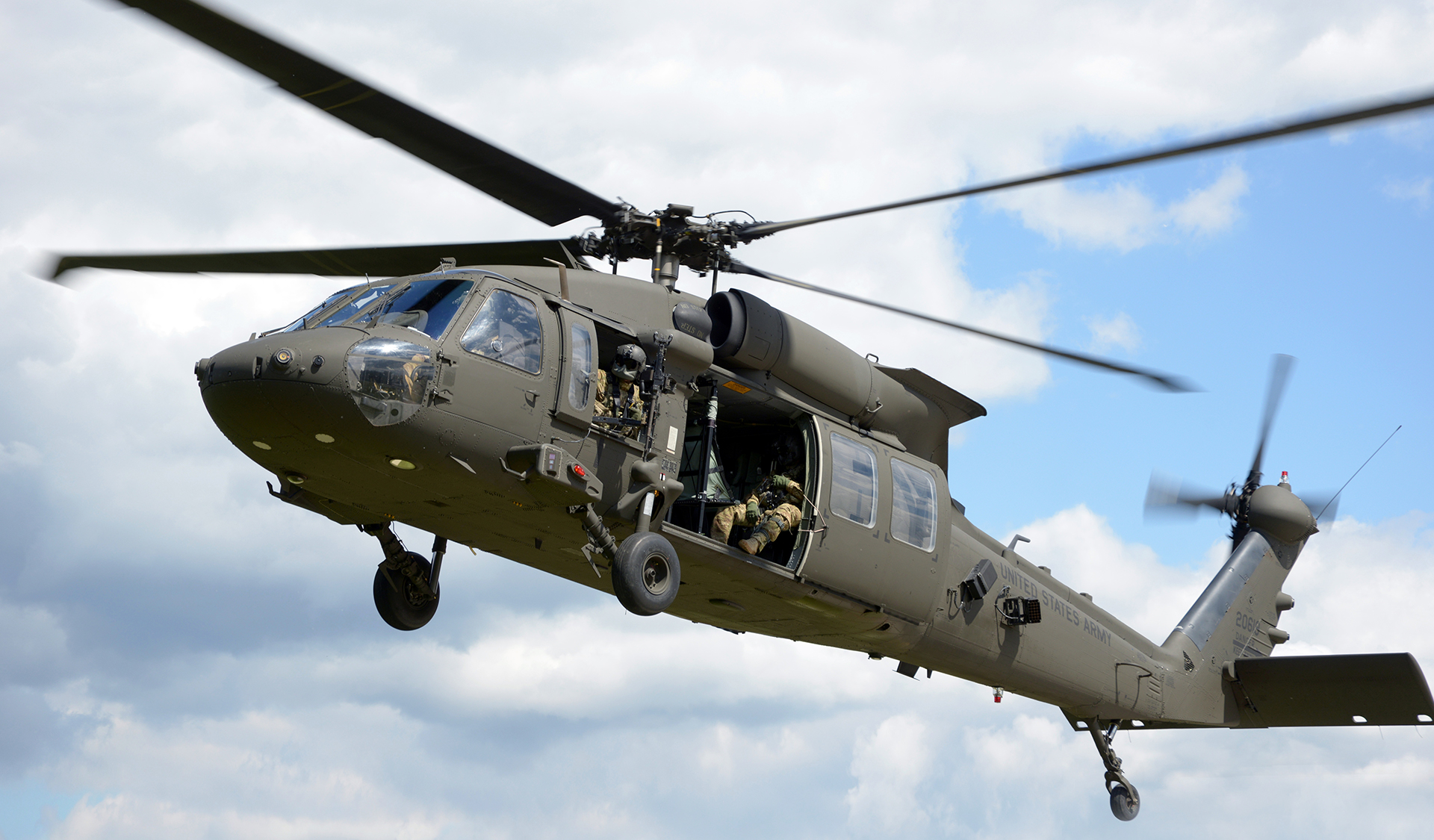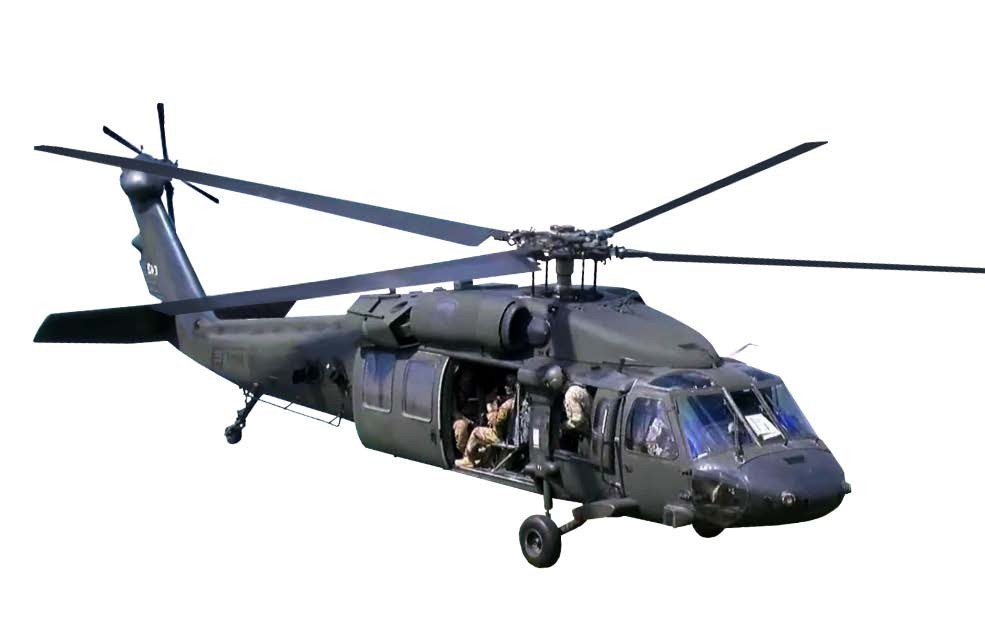The Future of the UH 60: Innovations and Upgrades for Improved Efficiency
The Future of the UH 60: Innovations and Upgrades for Improved Efficiency
Blog Article
UH-60: Advancements in Modern Helicopter Layout
The UH-60 helicopter stands as a standard in contemporary air travel, showcasing substantial developments in layout and modern technology that provide to the progressing demands of military operations. As we explore the advancement and vital technologies of the UH-60, it ends up being vital to take into consideration exactly how these advancements influence not only present applications however likewise the future landscape of helicopter layout.

Evolution of the UH-60
The evolution of the UH-60 Black Hawk helicopter represents a substantial milestone in aerospace design and military aeronautics. Introduced in the late 1970s, the UH-60 was designed by Sikorsky Aircraft to meet the United States Army's requirement for a functional energy helicopter efficient in carrying out a variety of objectives. Its design stressed sturdiness, ability to move, and rate, setting new criteria for operational efficiency.
The UH-60 includes a distinctive four-blade rotor system, which boosts lift and security, permitting it to run effectively in diverse environments. Its airframe is constructed from advanced composite products, adding to a reduction in weight while keeping architectural honesty. The helicopter's layout likewise includes better aerodynamics, which boosts fuel effectiveness and raises variety.
For many years, the Black Hawk has undertaken numerous upgrades to enhance its capacities, including enhanced engines, progressed flight control systems, and modular systems for very easy upkeep and adaptability. The helicopter's capacity to carry out missions varying from army transportation to clinical emptying has strengthened its role as a backbone of U.S. military operations. The UH-60 Black Hawk stays an archetype of exactly how advancement in helicopter style can considerably influence military efficiency and functional versatility.
Advanced Avionics Equipments
Improvements in avionics systems have actually changed the capacities of contemporary helicopters like the UH-60 Black Hawk, improving functional effectiveness and situational recognition (UH 60). The integration of sophisticated avionics enables for boosted flight, communication, and navigating management, making the UH-60 much more functional in diverse mission profiles
One of the key features is the innovative electronic cabin, which uses multifunction displays that offer real-time data, ensuring pilots have prompt accessibility to critical flight information. This streamlining of details minimizes pilot workload and improves decision-making procedures during complex procedures. Additionally, the consolidation of GPS and inertial navigating systems allows specific positioning and course preparation, enhancing goal execution in challenging atmospheres.
Additionally, progressed avionics systems improve interaction capabilities through protected information links and voice interaction systems, enabling smooth sychronisation with ground pressures and other aircraft. The integration of automatic flight control systems further adds to boosted stability and control, specifically in negative weather conditions or during low-altitude maneuvers.
Engine and Performance Enhancements
Engine efficiency in contemporary helicopters has taken a significant leap ahead, driven by technologies that improve dependability, power, and efficiency. The UH-60 Black Hawk, for instance, utilizes the T700-GE-701C engine, which includes a dual-channel, full-authority digital engine control system.
Moreover, the integration of engine health tracking systems enables for real-time diagnostics and predictive maintenance, considerably boosting operational reliability. These systems not only alert teams to potential issues before they become essential but likewise promote more reliable maintenance organizing, consequently decreasing downtime.

Materials and Structural Innovations
Recent advancements in materials and structural design have reinvented modern-day helicopter building and construction, boosting both performance and resilience. The introduction of innovative composite products, such as carbon fiber enhanced polymers, has dramatically reduced weight while preserving structural integrity. This shift not only boosts gas performance however likewise boosts payload capacity, allowing helicopters like the UH-60 to do even more diverse missions.
Furthermore, advancements in light weight aluminum alloys and titanium components have actually added to improved resistance to rust and tiredness, extending the life-span of vital airframe components. The tactical use these materials has brought about a decrease in upkeep demands and enhanced overall functional preparedness.

Additionally, the combination of computer-aided style (CAD) and additive production technologies has actually allowed extra lightweight frameworks and complicated geometries, maximizing the aerodynamic efficiency of helicopter styles. These innovations promote quick prototyping and production, allowing producers to respond promptly to advancing goal requirements.
Safety And Security and Survivability Features
Security and survivability features in contemporary helicopter design have come to be critical, mirroring the increasing needs for mission effectiveness in challenging settings. The UH-60 Black Hawk, a significant example, incorporates sophisticated modern technologies to enhance crew and traveler protection. One of one of the most essential developments is the incorporation of crashworthy Homepage gas systems developed to lessen the risk of fire throughout effect. Additionally, the airframe is constructed with strengthened materials that take in and dissipate power, more protecting residents in the event of an accident.
The helicopter also utilizes a ballistic defense system, that includes armored team helpful resources seats and crucial systems protecting, lowering susceptability to little arms fire and shrapnel. Enhanced situational awareness is accomplished via innovative avionics and sensor technologies, enabling pilots to discover and stay clear of dangers successfully.
Moreover, the integration of redundancy in important systems-- such as double engines and several flight control networks-- makes sure continued procedure also if one system falls short. The UH-60 is furnished with innovative emergency flotation gadgets, enhancing survivability in water touchdowns. Collectively, these attributes not only enhance the security of workers yet additionally raise goal success prices in hostile atmospheres, demonstrating the dedication to quality in helicopter style.
Verdict
The UH-60 helicopter stands for a considerable innovation in contemporary air travel technology, integrating cutting-edge materials, cutting-edge avionics, and robust safety functions. Generally, the UH-60 offers as a benchmark for future growths in helicopter layout, symbolizing durability and versatility in contemporary army operations.
The UH-60 helicopter stands as a criteria in contemporary aviation, showcasing substantial advancements in layout and modern technology that cater to the evolving needs of armed forces procedures. As we explore the development and crucial developments of the UH-60, it ends up being vital to consider exactly how these developments influence not only existing applications yet additionally the future landscape of helicopter style.
Presented in the late 1970s, the UH-60 was made by Sikorsky Aircraft to fulfill the United States Army's pop over to this web-site demand for a functional utility helicopter capable of performing a range of goals. The UH-60 Black Hawk continues to be a prime example of exactly how innovation in helicopter design can significantly influence armed forces performance and operational flexibility.
Generally, the UH-60 offers as a standard for future growths in helicopter layout, personifying durability and adaptability in contemporary army procedures.
Report this page